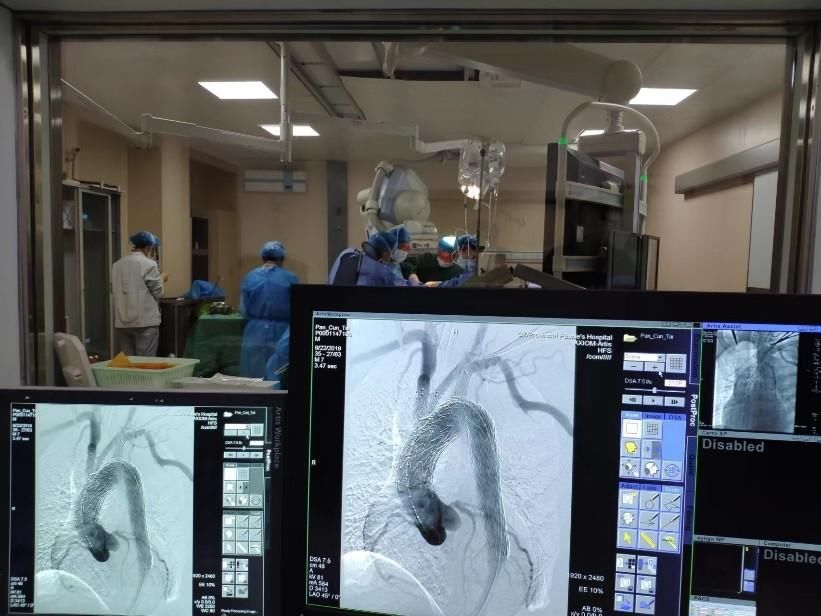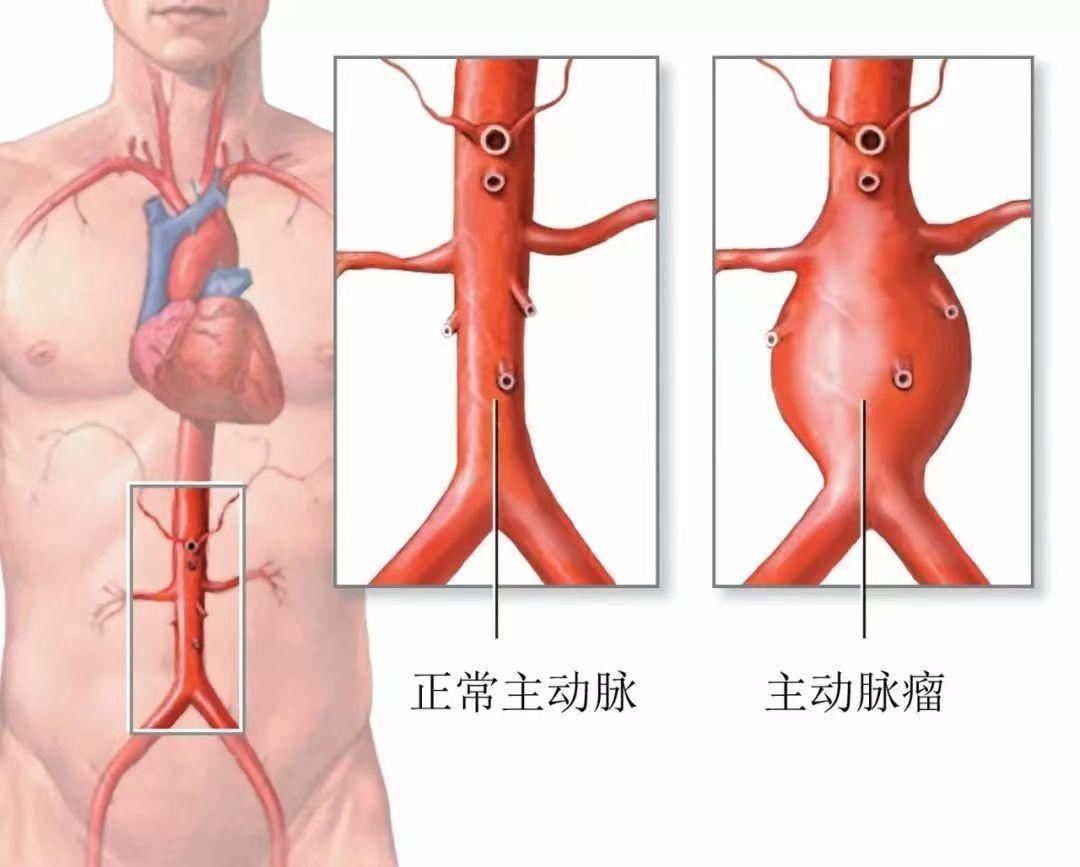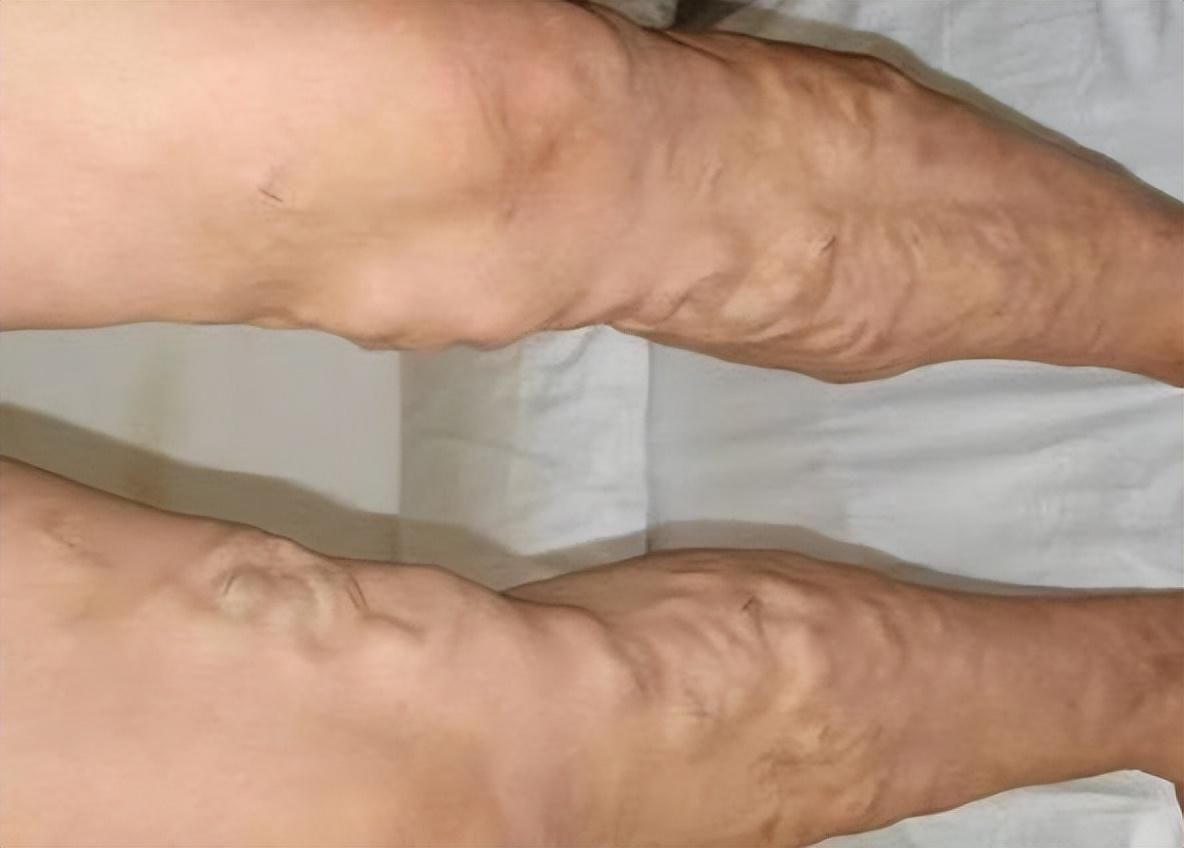Source: Guizhou Provincial People’s Hospital
75-year-old Uncle Yang often felt a throbbing mass in his stomach. He could feel it more clearly when he lay down. The tendency to grow up gradually, and it is often painful. Recently, under the persuasion of his family, Uncle Yang came to the Department of Vascular and Thyroid Surgery of Guizhou Provincial People’s Hospital for treatment. After CT examination, he was diagnosed as abdominal aortic aneurysm, and the diameter of the aneurysm had reached 5.5cm, like a A “time bomb” that is in danger at any time.
There is currently no drug that can reverse abdominal aortic aneurysm, and surgery is the only solution to this “ticking time bomb”. According to statistics, the risk of death of abdominal aortic aneurysm rupture is even more than 85%, which is a veritable death.
Yuan Ping, director of the Department of Vascular and Thyroid Surgery of the Provincial Medical College, organized manpower immediately to determine the optimal plan, and performed minimally invasive stent implantation for Uncle Yang, doing his best to save the patient’s life. During the operation, only one needle hole needs to be pierced in both thighs, and the doctor can use a stent to isolate and repair the aneurysm. The day after the operation, you can get out of bed and eat normally. Three days later, Uncle Yang was discharged from the hospital with a beating bag in his stomach. The block is finally quiet and the pain sensation is gone.
Yuan Ping introduced that the abdominal aorta is a main blood vessel located in the deep part of the abdominal cavity and the front edge of the spine. Under normal circumstances, the abdominal aorta is straight and generally less than 1.8 cm in diameter. Abdominal aortic aneurysm refers to aneurysm-like expansion of the abdominal aorta, usually defined as an aneurysm with an increase in diameter of more than 50%. Common risk factors include smoking, hypertension, advanced age, and male sex. Because of the word “tumor”, many people mistakenly think that abdominal aortic aneurysm is a malignant tumor. In fact, this is not the case. The essence of abdominal aortic aneurysm is the expansion of blood vessels without the existence of any tumor cells, but the harm is no more than malignant. The tumor is small, and once it ruptures, high-speed, high-volume blood flow will rush out, and the patient can die within a few minutes due to massive blood loss.


reading extension
Vascular surgical diseases mainly refer to the lesions of human peripheral blood vessels, namely systemic arterial and venous diseases other than cerebrovascular and cardiovascular diseases. In layman’s terms, we can regard the blood vessels of the human body as a set of reciprocating water pipe systems. The water pipes may expand, block or even rupture due to reasons such as poor quality, long use time, and external force damage. The same is true for the blood vessels of the human body.
When an artery dilates, what we call an aneurysm forms, and when it ruptures, it can cause massive bleeding and even death. Modern medical technology allows us to treat aneurysms by minimally invasive stent implantation, which is equivalent to inserting another water tube into a swollen and deformed water tube to isolate the aneurysm and prevent it from bursting and bleeding. If you feel a beating mass on your body, you should be alert to the possibility of aneurysm, and you need to go to the hospital for examination in time. Severe high blood pressure can cause long-term pressure on blood vessels, which can lead to aortic dissection.
Aortic dissection is a critical illness with a very high fatality rate. In short, the intima of the artery is torn, causing blood to enter the dissection of the aortic vessel wall. Chest and back pain, once suspected aortic dissection needs to go to the emergency department of the hospital immediately. Many elderly patients with a history of smoking in life feel that their calves are sore and weak after walking a short distance, and usually feel that their lower extremities are cold. At this time, it is necessary to consider whether the occlusion of the lower extremity arteries has occurred. For example, water pipes are blocked by stones and sediment, resulting in poor water flow. Once the blood flow of the lower extremity arteries is poor, it will cause ischemia or even necrosis of the lower extremities, and finally lead to amputation or even life-threatening.

varicose veins are the most common vascular disease in life, which often occurs in some long-standing occupational groups, such as teachers , farmers, etc., manifested as many tortuous and expanded cord-like veins on the superficial lower extremities, some patients will also develop eczema on the calf and ankle, darkening in color, and even ulcers that are not easy to heal, commonly known as “old rotten legs”. Need to go to the hospital for evaluation of conservative treatment or surgery. In addition, deep vein thrombosis is also more common clinically. Long-term lack of activity in the lower extremities can lead to a multiplied risk of deep vein thrombosis, especially in some cases of bedridden trauma, unscientific “confinement” after childbirth, and some patients who travel for a long time in transportation. Deep vein thrombosis often causes symptoms such as sudden swelling, fever, and pain in one leg, and further thrombus will fall off, finally blocking our pulmonary artery, causing symptoms such as difficulty breathing, chest pain, and even life-threatening.